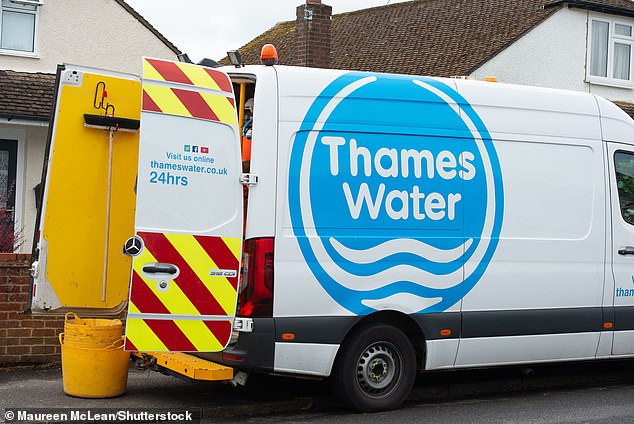- Thames Water’s total liquidity plummeted to almost £1.8bn at the end of June
- The company has around 16 million customers in London and the Thames Valley.
Thames Water has enough liquidity to fund its operations for just 11 months, the troubled water company warned on Tuesday.
The debt-ridden utility blamed shareholders’ refusal to give the group a £500m emergency funding package in March, amid concerns that regulators’ demands had made the firm’s business plan uninvestable.
Thames Water had liquidity of around £2.5bn at the end of March, but this had fallen to almost £1.8bn as at 30 June, of which £1.5bn comprised cash on hand and £296m was undrawn committed bank credit facilities.
Britain’s largest water utility said it would press ahead with a new three-year recovery plan to improve its service.
It will seek to raise fresh capital and increase its liquidity once regulator Ofwat makes its preliminary decision on the company’s business plan on July 11.
Ofwat will decide how much the company can raise consumer prices between 2025 and 2030.
Thames Water, which has around 16 million customers in London and the Thames Valley, wants to increase bills by up to 44 per cent to fund a £3bn investment.
Proposals for significant increases in consumer bills have been met with outrage in some quarters following criticism of the group’s large dividends over the past decade.
The Berkshire-based company paid out £195.8m in dividends in the 12 months to March, compared with just £45.2m a year earlier.
He said the dividends were paid to help two financially struggling holding companies, Kemble Eurobond and Thames Water Limited.
Meanwhile, its net debt rose by more than £1.2bn to £15bn, making it the most indebted water company in England and Wales.
And the company saw pollution incidents rise from 331 to 350 last year, following a 40 per cent increase in rainfall, although leak levels fell to their “lowest ever” annual average.
However, its underlying turnover rose 10 per cent to £2.4bn, helped by inflation-linked increases in water and wastewater service charges, and it recovered from a loss of £132.3m to a profit of £139.8m.
Chris Weston, chief executive of Thames Water, said: “The challenges we face are well documented, but our operational and financial performance over the past year shows good progress.”
He added: “We have made year-on-year improvements in our key water metrics, with leaks at an all-time low, and we are supporting more customers through our social tariffs.”
Much of the company’s debt was accumulated between 2006 and 2017, when Thames Water was owned by infrastructure bank Macquarie.
Critics say the Australian firm, often nicknamed the “Vampire Kangaroo”, took in billions of dollars in loans and dividends during its tenure at Thames Water.
Since then, Thames Water’s debts have continued to rise, partly due to interest rates pushing up borrowing costs and multiple fines for leaks and spills.
Susannah Streeter, director of money and markets at Hargreaves Lansdown, warned that the British government may have to take control of Thames Water if it collapses.
She said: ‘The new Labour administration will want to avoid ‘nationalisation’ but will have to intervene, given that it is a crucial part of the country’s infrastructure.
“Contingency plans are likely being drawn up to set up an independent, publicly owned body to manage the company if the financial tap is eventually turned off.”
However, senior Labour figures have suggested that full nationalisation of Thames Water is out of the question as such a proposal would risk breaching the Government’s “fiscal rules”.



